
It’s easy to forget that visual novels are more than just static stories where you click along aimlessly. It’s even easier to forget, that in its loosest interpretation many adventure games could be considered “visual novels.”
Root Film is the latest reminder that visual novels as a game genre aren’t going anywhere anytime soon. With a mysterious plot to uncover, places to explore, and clues to collect, the player is more than just a passive spectator.
Root Film
Developer: Kadokawa Games
Publisher: PQube
Platforms: Nintendo Switch (Reviewed), PlayStation 4
Release Date: March 19, 2021
Players: 1
Price: $49.99 USD
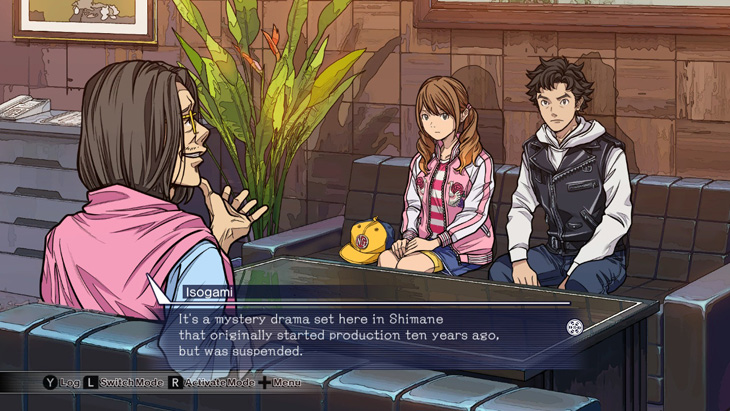
Root Film is the second game in the Kadokawa Mystery Games series after 2016’s Root Letter. Both games are visual novels that use the genre as a vehicle for mystery storytelling.
Players follow the stories of two protagonists; Rintaro Yagumo, a director known by his pen name Max Yagumo. After winning an Asian film competition he’s been eager for his next break instead of making Direct-to-DVD horror films. He’s given his chance in the form of a revived film project where three directors compete in making a mystery film.
The second protagonist is the young actress known only by her stage name: Riho. She also does work as a model, and during her shoots she comes face to face with murderous incidents that she feels only she can solve.
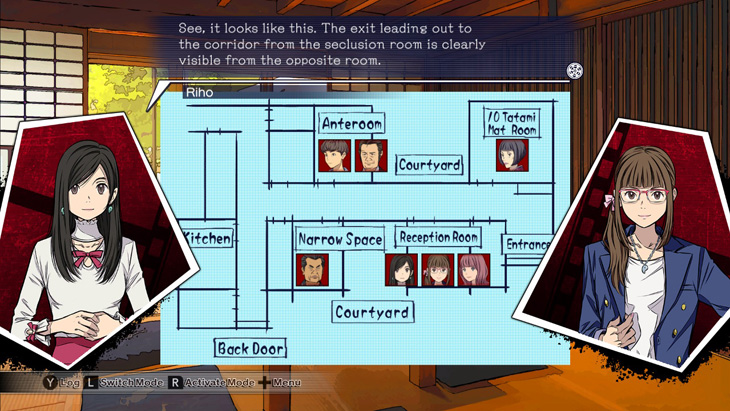
Root Film (much like Root Letter before it) proudly takes place in the real life Japanese Shimane prefecture, using images with the permission of local residents and businesses to create the background for their mysteries. Players will explore much of the prefecture as they come across murderous incidents.
The game takes place with care to mention cultural landmarks like the Iwami Ginzan Silver Mine, and Matsue Castle. Root Film also makes reference to regional festivals and folklore. The game is almost as much about immersing yourself in the prefecture as it is solving mysteries.
It’s worth noting that Max Yagumo could be considered the primary protagonist, he’s given a whopping five chapters (some of them considerably lengthy) compared to Riho’s two.
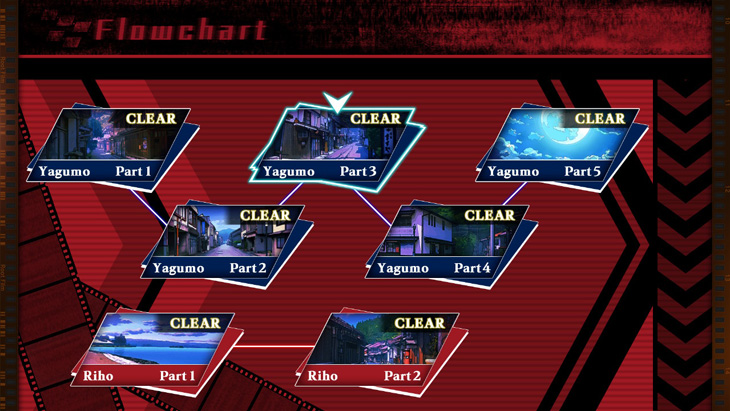
Each chapter focuses on a different mystery, however in Max’s case there’s something unsettling. An overarching plot that spans the entire game and concludes at the end of the fifth chapter. It’s laudable how Kadokawa manages to keep the story of each chapter paced to keep the player from getting bored, while also dropping hints and progressing the main plot.
Nothing is a throwaway line or revelation in Root Film, everything has a purpose. Things from Chapters one and two will be alluded to in chapter five, and seemingly innocuous details are given the sort of relevance that will shock the player.
At least once during play, I literally sat upright and focused intently during a climactic scene. It takes incredible writing to have someone on the edge of their seat playing a visual novel of all things.
The tricks, the deaths, the side plots, clues, and the overall themes make Root Film an incredible mystery to witness. At the risk of sounding sycophantic, Kadokawa should be proud of the story they’ve told in Root Film. However, there is a problem with the writing that doesn’t come from Kadokawa themselves: it comes from the translation.
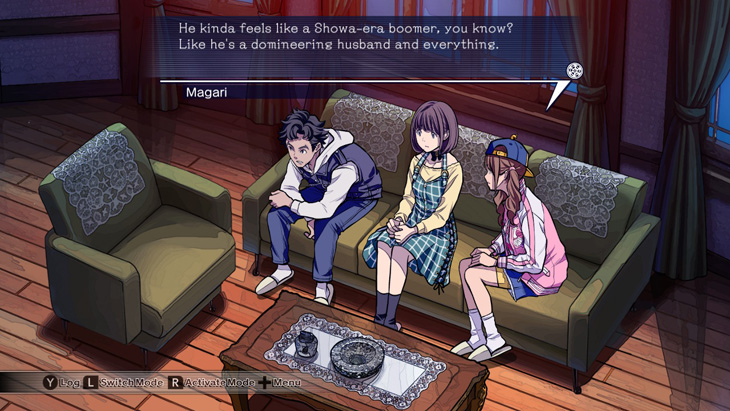
The translation features western colloquialisms. This isn’t necessarily a bad thing depending on the context, but it makes me uneasy regarding the authenticity of how some scenes were translated. However this is offset by their use of phrases like “Showa-era” and unapologetic inclusion of Japanese culture without any attempt to alter the intention.
It feels unusual though, to present a game that relies so heavily on Japanese culture and expect at least a basic understanding of phrases like “Showa-era” from the audience, and then make the choice to not include the honorifics in the text.
Rather, the real problem isn’t the contents of the translation, it’s the relatively common errors and typos that’s a blemish on otherwise great writing. In Riho Chapter One for instance, the game constantly flip-flops on whether the local restaurant is Restaurant Bear, or Restaurant Pair (even worse, it’s probably Restaurant Pear as one of the cafe’s specialty drinks features pear juice).
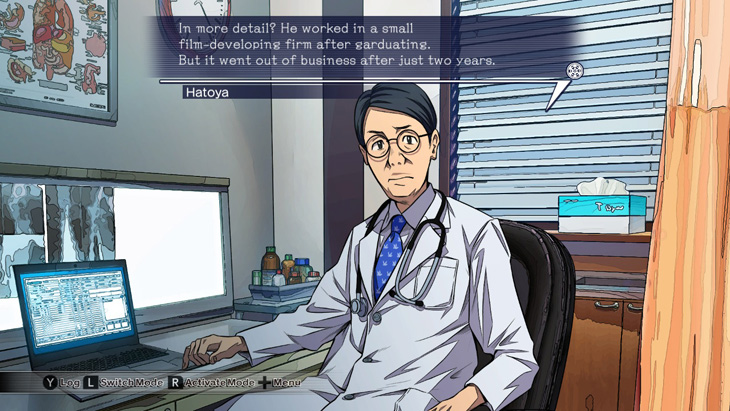
There’s also typos and one scene where a male character is referred to with female pronouns. These mistakes are infrequent, but frequent enough to make the translation feel cheap in places. It feels like someone should have caught these at some point in localization.
Nevertheless, despite the typos and mistakes, the spectacular writing of Root Film manages to overwhelm any flaws and manages to maintain an immersive story.
The game’s art largely shines with character design. While there are backgrounds for every scene, I’m reasonably certain they’re just real pictures that have a filter applied to them. Though given the game’s function as kind of advertising Shimane prefecture, this isn’t really a bad thing. It’s kind of nice seeing the actual places these characters visit.
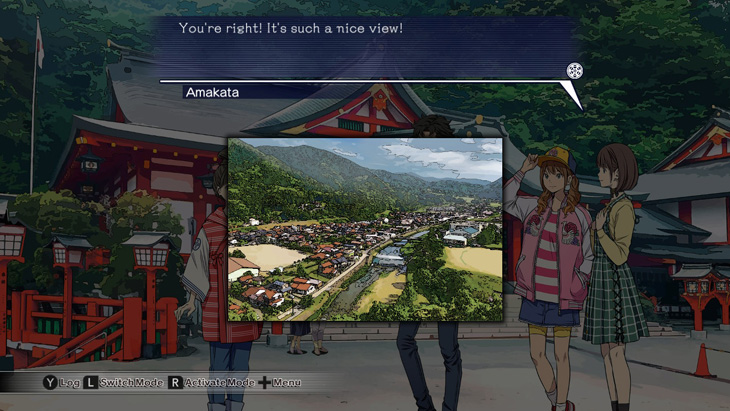
All the characters have their own unique charm; from the eccentric and mature aesthetic of veteran director Izaya Ibuse, the tomboyishness of film editor Aine Magari, or the calm beauty of assistant Monami Haishima.
No matter how minor, every character is given a face and appearance, very rarely are there faceless mob characters giving exposition. On the topic of the detail given to the characters, Root Film is fully voiced and with an all-star cast too.
Leading actors include Wataru Komada as Max Yagumo; Komada is known for his roles in Wise Man’s Grandchild and the upcoming Burning Kabbadi. Meanwhile Yu Serizawa voices his assistant Aine Magari; Serizawa is known for her roles in shows like Magical Girl Site and more notably as the buxom elf Shera L. Greenwood in How Not to Summon a Demon Lord (which is getting a second season this year).
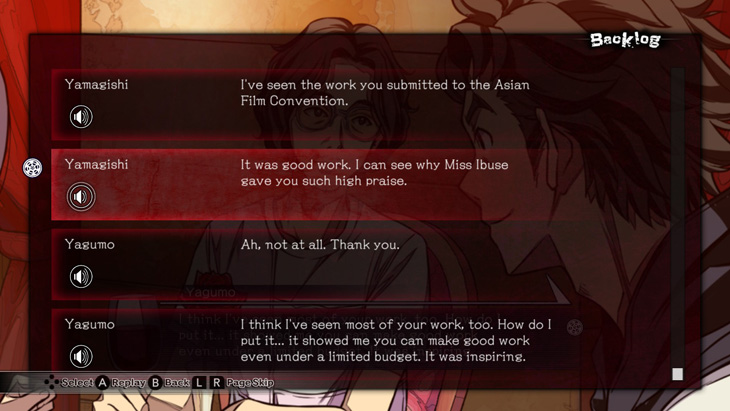
That’s to say nothing of the rest of the voice cast. Every time a character speaks, the line is voiced. Which makes sense as a selling point, but it’s made all the more important given the heavy narrative style of Root Film.
Root Film also shines with its musical score. It ranges from kind of smooth funk during normal gameplay, to more classical and Japanese instrumental sounds during scenes near temples, and a vocal version of the game’s theme during the end credits.
The game also concisely uses audio to tell part of the story. One particular scene features multiple gunshots, with their presence and frequency being a potential clue.
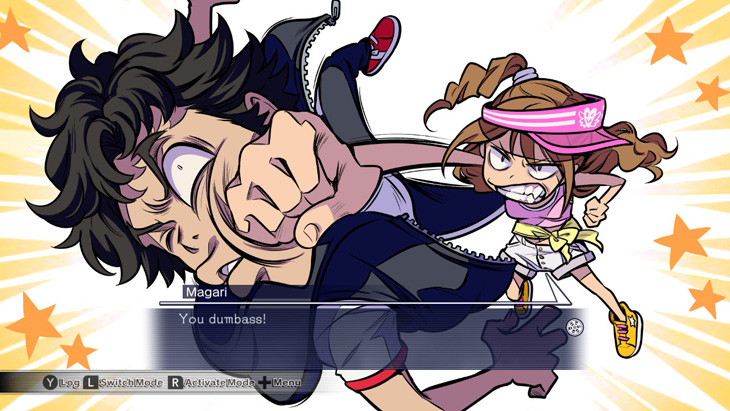
The gameplay of Root Film is nothing unexpected, it is of course a visual novel. This doesn’t leave much room for any action-packed mechanics. But lest we forget, at their core visual novels are scarcely different from adventure games, and Root Film is no different.
Players will find and encounter clues which Max and Riho remember with their “synesthesia,” a real-life medical condition where things are seemingly perceived with the incorrect sense. In this case, Max and Riho will “see” important clues, and know to make a mental note of them.
These clues will later reappear during climactic accusations, where players will engage in a mini-game. The purpose of the mini-game is to use these clues to poke holes in your opponent’s argument or alibi, and reveal the truth. Not entirely dissimilar to Ace Attorney.

The rest of the gameplay simply involves exploration, which admittedly can become tedious. Sometimes a clue or scene won’t activate until the second, or even third time you’ve visited a place or interacted with someone.
On the one hand this encourages thorough sleuthing, but on the other it becomes an annoyance. Thankfully tactical use of the “Skip Read” function helps cut out any redundancy.
The game is also forgiving with its use of auto-saves, and how it won’t progress the story until you’ve found everything relevant to proceed. There’s no chance of getting soft-locked because you missed a clue, nor is there any harsh setback if you encounter a bad end. The game auto-saves frequently, and at worst you lose 1-5 minutes.
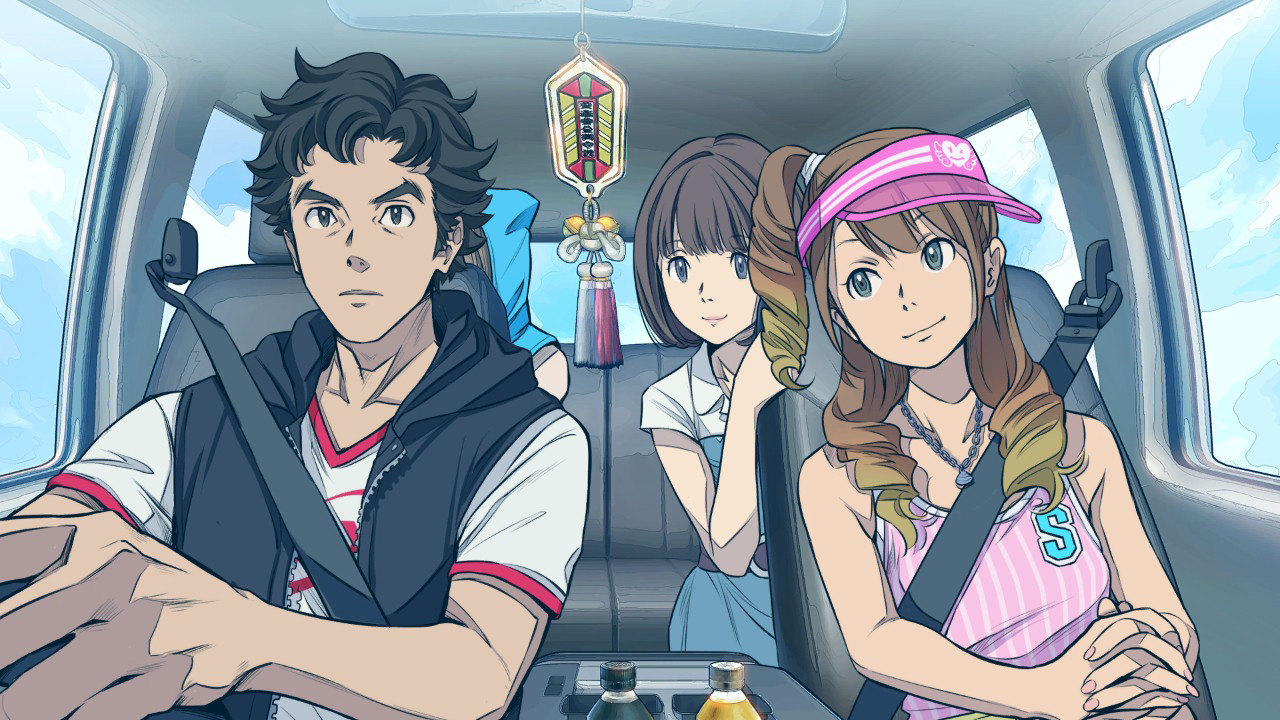
Ultimately, Root Film is a fantastic mystery visual novel that provides a thrilling story, a colorful cast of characters, and the kind of excitement you might not expect from the genre.
Fans of adventure games like those made by Telltale or even older-style games like Monkey Island might want to give Root Film a try. Meanwhile visual novel fans will find little to complain about asides from the typos; as the story, voice cast, and art direction are all top notch.